QuestionWe adopted a rescue goldendoodle three weeks ago from a puppy mill. The Vet believes she is approximately six months old. My problem, and it's a big one, is house training and eating feces - UGH! She's a smart girl but I think she's learned too many bad habits while living at the mill, one of which might have been she didn't get food on a regular basis so eats her own feces - UGH again! As she was undernourished I leave her food and water out so she'll eat whenever she's hungry, but she doesn't always eat it. How much food and water should she have? Can I put it down for her for a fixed amount of time and then lift it up? For how long? While I'm trying to house train her how do I regulate her bm's when I don't know when she's eaten? We have her crated when we're not home, and confined to one section of the house (Kitchen/familyroom). If I leave that section of the house I crate her (she cries) as I worry that she'll bm on the floor; which she's done already. We have a large back yard but I don't let her run free as much of the yard is wooded - she bm's there - I don't know it - and when she comes back she's eaten it. Please help me, it's the dog or my marriage.
Thanks so much.
My question is,
AnswerHello, Christine. Bless you for helping that dog. I hate and despise puppymills and pet stores that sell puppies and kittens. >:^(
I think you've pegged the reason she eats her own feces, but honestly, it's not something to be concerned about really. Yes, it's gross to you, but it's perfectly normal for your dog, and as long as she's getting adequate nutrition now, it isn't going to hurt her at all to eat her own feces. Putting her on a feeding schedule where you give her food and then take it up an hour later will be much better for her housetraining, as you mentioned. I don't like free-feeding, which is leaving food down all the time, because it makes housetraining very difficult, and it puts the dog in control of her food, which can lead to food aggression. YOU need to be in control of your dog's food; she needs to know that her food, and really every nice thing in her life, comes from you. This will elicit respect from her to you without getting physical or causing her to fear you. Basically, at feeding time (which can be twice a day), you would call her to you and tell her to sit. Then, you would calmly praise her verbally, set her bowl down and stand back up, wait a few seconds, and give her a release word to allow her to break the sit and begin eating. Now, at first, things will not go this smoothly. She may or may not sit, or if she does, she will break the sit and immediately try to eat the food as soon as you get it down to nose level, or as soon as you stand back up. You will have to teach her that she must sit when told, cannot break the sit (and therefore cannot eat) until you tell her to. If she does not currently know the sit command, it is easy to teach. Just let me know and I'll give you some instructions on how to teach it.
You may have to start out a few feet away from the dog instead of right in front of her, to discourage her from breaking command and going for the food as you set the bowl down.
Ok. So you have commanded her to sit and she has sat. If she doesn't sit, you will need to verbally (and maybe use the leash too) correct her and give her the sit command again. At first, I give my dogs two chances. If, after the second sit command, the dog still does not sit (and KNOWS what sit means), I take the bowl, walk away, and put it up on the fridge or somewhere where she cannot get to it and ignore her for at least 30 minutes, or until she has lost interest. Then I try one more time. If the dog doesn't cooperate this time, she has forfeited that meal and does not get another opportunity until the next mealtime, where she gets the same amount of food she would have had she ate the first meal - not a double portion. It usually only takes a day for the dog to figure out that they'd better sit when told or they don't get to eat that meal! Learning not to break the sit until told, however, can take a little longer depending on the individual dog and how hungry or food motivated she is. At first, I allow 3-4 breaks of the command at mealtime before walking away with the food bowl. When the dog sits, verbally praise her and if you want, give her a piece or two of her food. Then try to set the bowl down. If the dog breaks the sit and goes for the bowl, say "Phooey" in a scolding tone of voice and immediately stand back up with the bowl - don't let the dog sneak a bite of food! Tell the dog to sit again. If you can have someone to help you, you can have the dog on a leash and training collar (I prefer the pinch collar to the choke collar because it's much more humane and also easier to use) and when you say "phooey," your helper can correct the dog with the leash. When the dog sits again, just say "good," no elaborate praise this time, and try to set the bowl down again. Repeat as above if the dog breaks command again, for up to 4 times.
At first, give the release word as soon as you stand back up. After a day or two, start waiting an extra second, then one more extra second, until she is waiting several seconds after you've stood back up before being released. Of course, don't make her sit there forever; 2-4 seconds is plenty. As soon as you release her, you can praise and pet her or just walk away. Leave her alone for at least 30 minutes to allow her enough time to eat, and then pick up the bowl and put it away. If she hasn't finished all the food, dump whatever is left back in the dog food container. She should always be offered the same amount of food at each feeding, no matter how much she has eaten at the previous feeding.
Ok. So, once you have gotten her on a schedule, you will be more in control of her pottying as well. The general rule of thumb when it comes to puppies and pottying is that they will need to have a bm within 20 minutes of eating, and they will need to pee about as many hours as they are old in months. Once she has finished eating her meals, take her outside on a leash about 15 minutes later, and walk her around to stimulate her bowels. It's important that she be on leash so that she doesn't get distracted and 'forget' to go until she gets back inside, and also so you can praise her when she finishes pottying outside, and then lead her away from it so she doesn't eat it. Since she's 6 months old, she should be taken out to pee about every 5-6 hours, again, on leash so she can be praised. If you find where she has pottied in the house, but you do not catch her IN THE ACT of pottying, do not scold her or rub her nose in it or anything, because she will not understand. Just clean up the spot with an enzymatic cleaner like Nature's Miracle (which gets rid of all traces so the dog isn't likely to use the same spot again). You should only scold her for pottying in the house IF you catch her in the act of doing it, and when you catch her, you should clap your hands, or yell "NO!" or do something to startle her, and then say "Outside" and quickly encourage her to follow you outside. If you allow her to drag a 4-6 foot long leash while inside, you can grab it and use it to lead her outside. If you do this, make sure the drag leash is attached to a regular collar and not a training collar.
I need to know how much she weighs before I can tell you how much she should be eating each day. If you could send a picture of her that would help also. My e-mail address is blueridgerescue@gmail.com. It also depends on her activity level and what food she is being fed. Lesser-quality foods like Purina, Iams, and Science Diet are going to require that you feed more per day to get the nutrition out of it than a high quality food like Canidae, Innova, Wellness, or Solid Gold.
Kristen

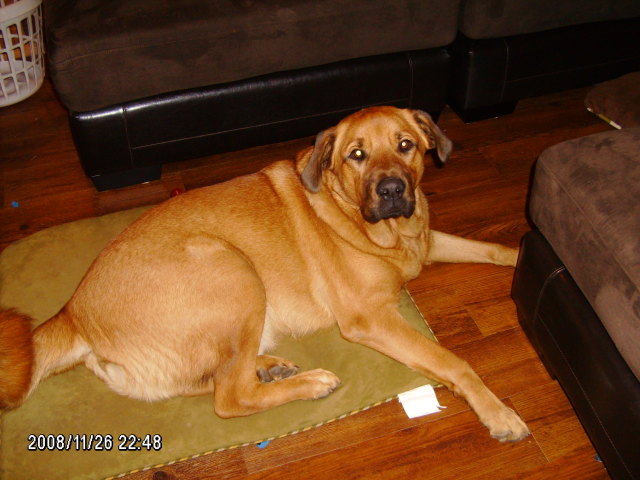 mouthing; pawing, wont drop it
Question
My puppy Trigger
I have a 10 month old LARGE (
mouthing; pawing, wont drop it
Question
My puppy Trigger
I have a 10 month old LARGE (
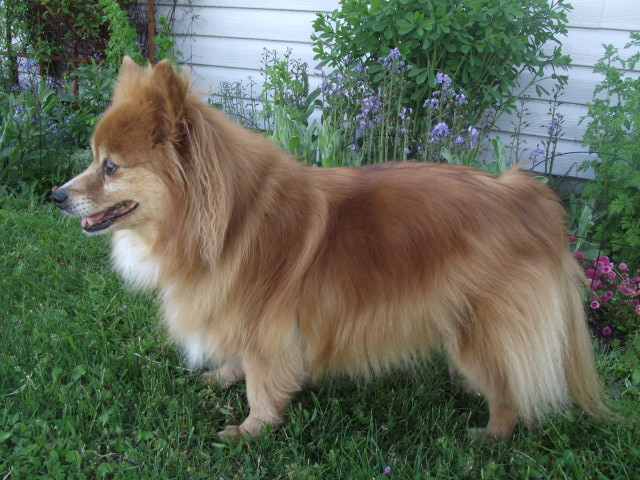 Shaving a Pomeranian
Question
Brandy my Pomeranian!
I have a few ques
Shaving a Pomeranian
Question
Brandy my Pomeranian!
I have a few ques
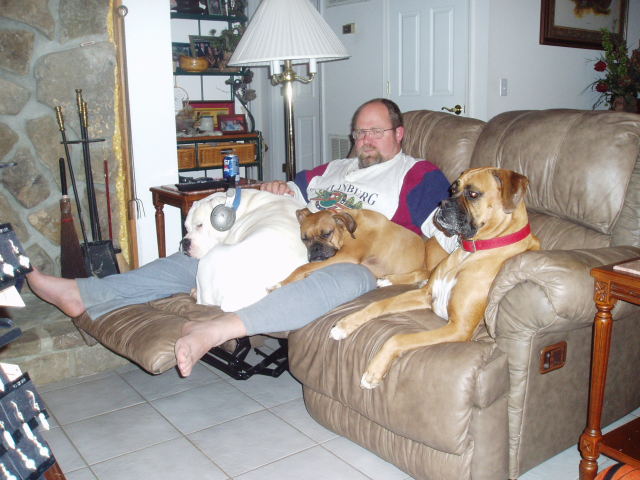 aggressive behavior between my 3 dogs
Question
My loves watching tv
I have always had boxers,
aggressive behavior between my 3 dogs
Question
My loves watching tv
I have always had boxers,
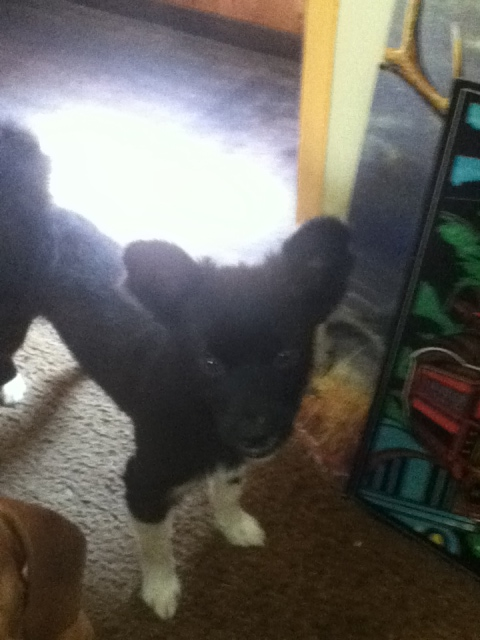 ideas of what breed dog this is?
Question
dog dog
i was wondering if anyone
ideas of what breed dog this is?
Question
dog dog
i was wondering if anyone
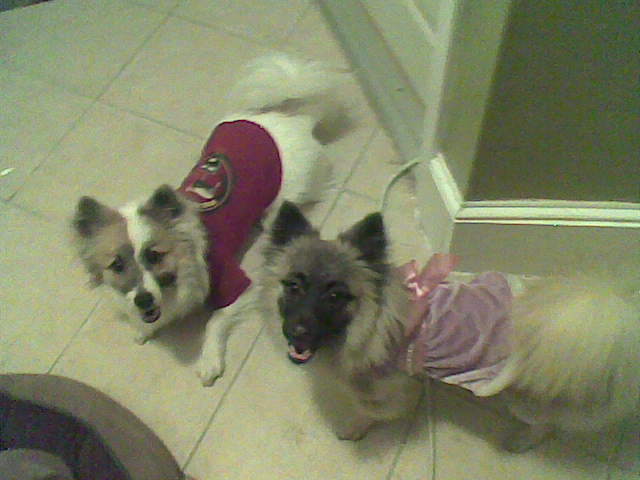 TRAINING POMERANIANS
Question
chichi&coco
I have two Pomeranian-mixed do
TRAINING POMERANIANS
Question
chichi&coco
I have two Pomeranian-mixed do